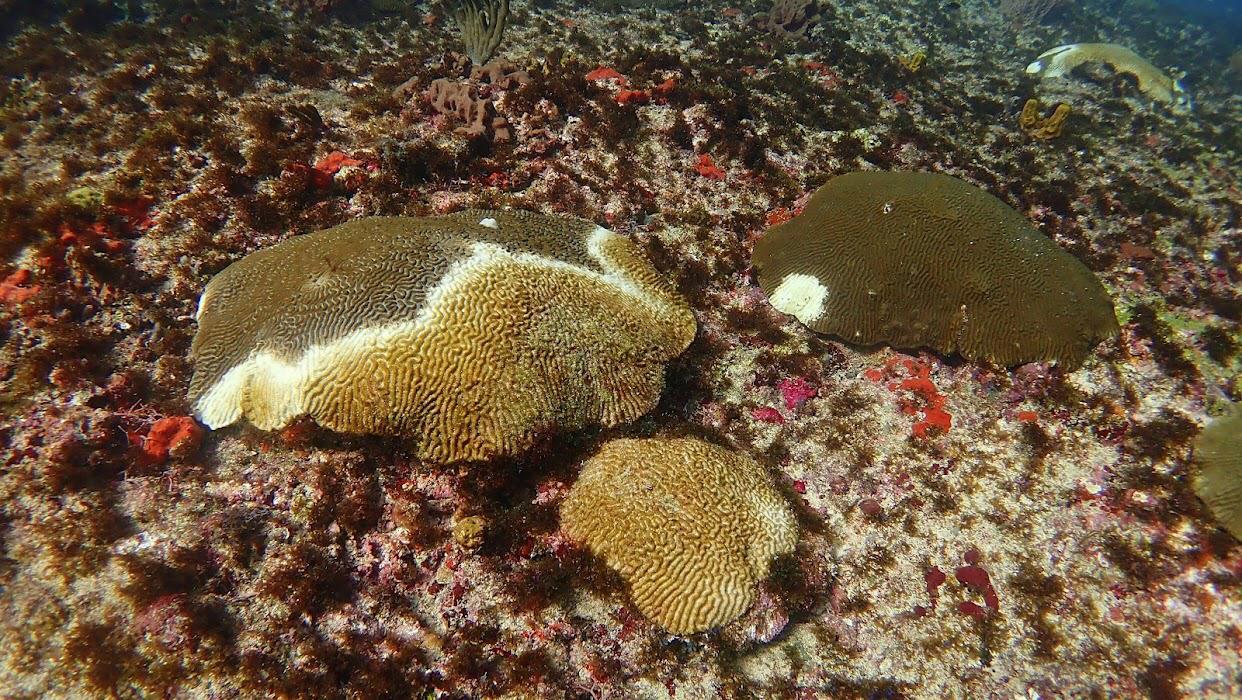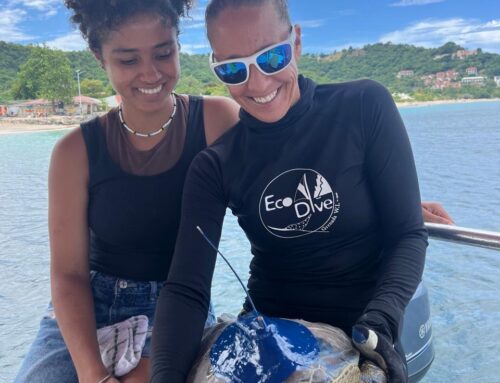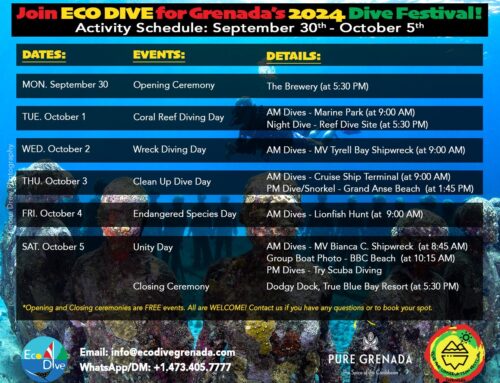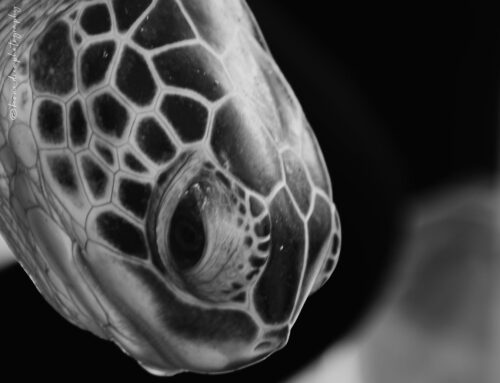A new coral disease threatening Grenada
In 2014 a new virulent and deadly coral disease was identified in the northern Caribbean and became known as Stony Coral Tissue Loss Disease, abbreviated SCTLD (referred to as ‘skitle’). In Feb 2022 SCTLD has been potentially found in Carriacou (spotted and being confirmed via our friends at TNC and AGRRA) and this week, in March 2022, coral colonies off the east coast of Grenada have been found with potential infection and are also being further investigated.

Mapping the spread of SCTLD in the Caribbean, scan QR code
This is not good news for our reefs so let’s take a chance to learn more about this new coral disease, what to look out for, and share some resources on what has/is being done, what’s worked and what’s not.
👋 ❔ ⚠️ 📝 To get things started if you are not a coral enthusiast yet, or haven’t had a chance to spend time chatting corals with one of our in-house marine biologists Christine Finney & Andre Miller (or friends, trainees and fans of Eco: Ashley, Dexton, Wayne, Krisma, Saba …so many cool people) we recommend checking out one of these great resources on the basics of corals first:
NOAA. https://oceanservice.noaa.gov/facts/coral.html , accessed online 4 Mar 2022
ICRI. https://www.icriforum.org/about-coral-reefs/what-are-corals/ , accessed online 4 Mar 2022
NOAA. https://coralreef.noaa.gov/education/, accessed online 4 Mar 2022
Stony Coral Tissue Loss Disease (SCTLD), what you need to know …
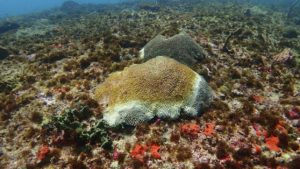
Photo credit: Phanor Montoya-Maya via TNC. Taken in Grenada March 2022
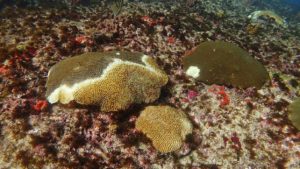
Photo credit: Phanor Montoya-Maya via TNC. Taken in Grenada March 2022
SCTLD is a fast acting, coral tissue destroying disease that affects more than 30 species of reef building hard corals. The cause of the disease is still unknown but it spreads quickly and mortality rates are high. Of all the species affected the brain corals (Pseudodiplorias), massive brain corals (Colpophyllia), pillar coral (Dendrogyra), Elliptical Star Coral (Dichocoenia), Smooth Flower Coral (Eusmilia), Maze Corals (Meandrina), and Star/Starlet corals (Siderastraeas) are particularly vulnerable. Colonies infected with the disease exhibit multiple lesions (multi-focal) and the disease and tissue death progresses quickly. As is suggested by the name this disease causes entire tissue loss, leaving bare coral skeleton in its wake which gets overgrown by algae thereafter (the golden coloured areas on the colonies seen above are algae overgrown on white bare coral skeleton, the white stripe is newly dead bare skeleton that the algae has not yet had time to cover). Follow this link for a presentation on how to identify SCTLD.
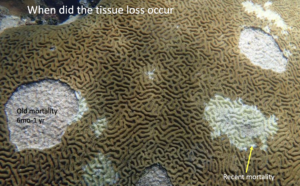
Presentation by NOAA’s Andy Bruckner
There are multiple coral diseases and many our reefs have been dealing with for years such as White Plague (WP), Black Band Disease (BBD), Yellow Band Disease (YBD), Dark Spot Disease (DSD) etc. A notable difference with this SCTLD is its quick progression and high mortality rates compared to other diseases. White Plague manifests similarly to SCTLD in appearance however it is not as prolific, does not progress as quickly and does not incur such high tissue loss/biomass loss (for more information on coral diseases please see our key reference list at the end of the post). Multi-focal coral bleaching can also cause multiple white markings on a coral colony, but, when a coral is bleached it is still alive and has tissue on its skeleton (just without the symbiotic algae that lives inside and gives it its colour), whereas with SCTLD the tissue is gone and what you are seeing is bare skeleton.
Here at Eco Dive we have been on the lookout for SCTLD over the last 2 years and had completed and reported reef surveys in St David’s (La Sagesse area, seen as the green dot on the SCTLD progression map 2020) and St George’s with Sustainable Grenadines in 2021. We are happy that up to this point none had been found, however with SCTLD making its way over the Caribbean many would say if this isn’t the first true finding it is only a matter of time. One big benefit for us here in Grenada of course is that since its identification in 2014 lots of research has taken place and lots of field experiments undertaken creating resources and lessons learnt for us to maximise. Scientists and divers in different areas have tried removing whole or partial colonies, have tried closing reef areas to recreational diving and snorkelling, have tried physical removal of the affected tissue, and have tried application of antibiotic cream to affected tissues. The challenges are vast, with a coral disease that although the pathogen is still specifically unidentified, is known to be transmissible in the water column and on equipment between locations. However, nature is nothing if not phenomenal and resilient, and our scientific community is nothing if not vast, tireless and determined.
What can you do?
- Keep your sharp divers eyes out while enjoying some beautiful diving around Grenada and if you suspect SCTLD send us (Christine) an email info@ecodivegrenada.com. We can help grab photos, confirm ID and liaise with the regional and local relevant organisations. Also see HERE for info and HERE for reporting data sheet and more direct resources if you are in other areas or more off grid.
- As always, keep your hands, feet and dive gear off the reef. Avoid touching the reef as much as possible. This is good manners all the time to help protect the biota and microbiota that live on the surface of marine creatures, helps them keep their balance and keeps us sting free! Unfortunately SCTLD is not limited to direct contact only, however, this always helps keep our reefs safer!
- If diving in known areas with SCTLD or suspected areas of SCTLD take extra care with your gear and decontaminate before diving again in another area. For more details on how, follow this link AGRRA SCTLD Dive Gear Protocols
- Stay tuned on our social media platforms (IG, FB) and here as this develops we will be scheduling scouting dives to survey for coral diseases around our reefs and will be involved in helping to set a plan moving forward.
Cheering on our Grenada/Carriacou corals!
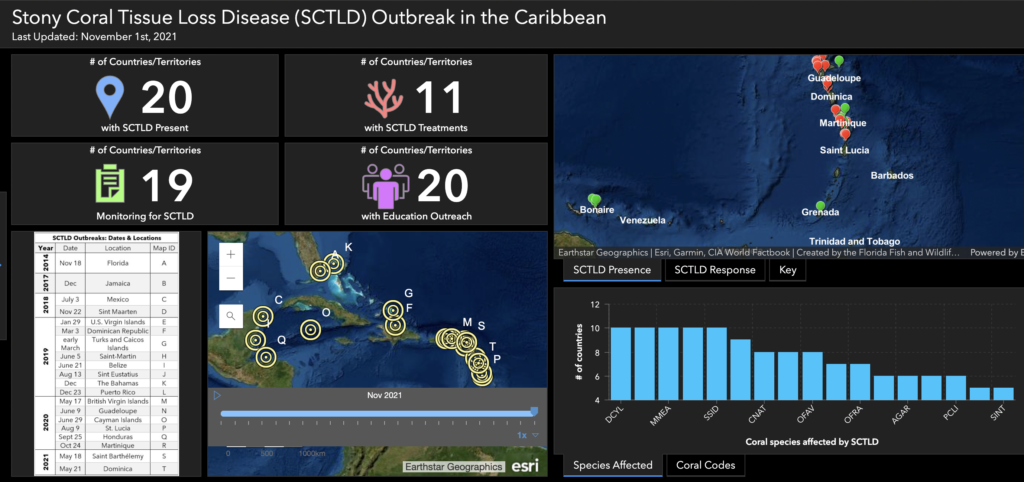
This will be a team effort and will continue to be a developing situation for the entire Caribbean region but information is power.
More Key Resources:
Kramer, P.R., Roth, L., and Lang, J. 2019. Map of Stony Coral Tissue Loss Disease Outbreak in the Caribbean. www.agrra.org. ArcGIS Online. [access date 04/Mar/2022]
Living Oceans Foundation. https://www.livingoceansfoundation.org/publication/progress-in-understanding-coral-diseases-in-the-caribbean/ , [access date 04/Mar/2022]
NOAA. https://www.agrra.org/wp-content/uploads/2020/09/SCTLD-ID-sep-2020-Bruckner.pdf , [access date 04/Mar/2022]
Post prepared by Christine Finney

